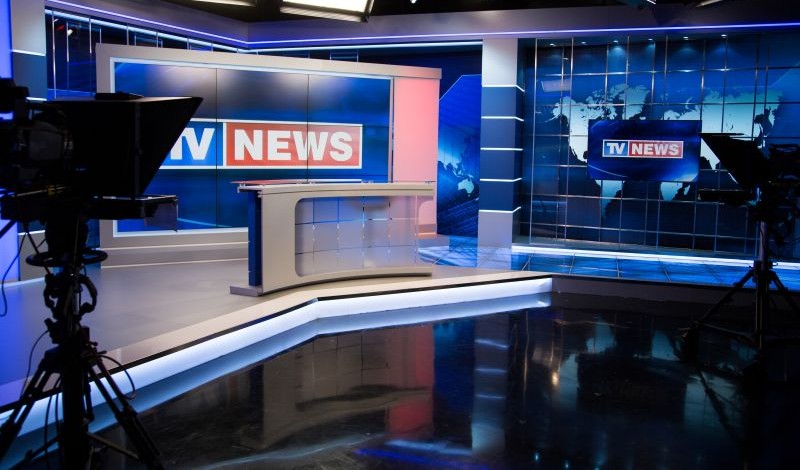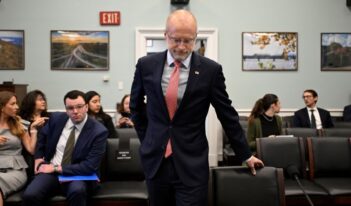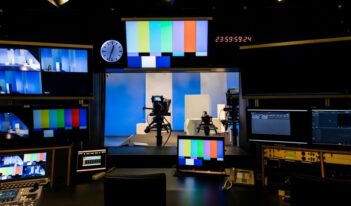
The Court should not overturn a settled doctrine that ensures the fair use of airwaves.
Imagine if a local city government decided to contract out management of its public park to a private company. The company could invite whomever it wanted to use the park and keep all the revenue from ticket sales or rentals. But because the park was public property, the contract specified that the company had to run the events and other rentals in a viewpoint-neutral manner.
Then imagine that the company invited people to use the park such that 97 percent of the rallies and events held there were put on for liberal groups and only 3 percent by conservative groups, despite a fervent desire from all politicians to use the park. Would we say that the management company is operating in a viewpoint-neutral manner? Obviously not.
Yet that is the situation we find ourselves in when it comes to broadcast television, where an overwhelmingly lopsided majority of guests on shows, jokes on late-night shows, and stories on the news all go just one way year after year. Federal Communications Commission (FCC) chair Brendan Carr said recently that “the public interest means you can’t be running a narrow, partisan circus and still meet your public interest obligations.”
That is why I respectfully disagree with the argument by Richard J. Pierce, Jr., that the U.S. Supreme Court should revisit its 1969 decision in Red Lion Broadcasting v. FCC, one of the foundational cases recognizing limited protections under the First Amendment of the U.S. Constitution for broadcast media compared to other forms of news or entertainment media. In Red Lion, the Court held that regulations requiring broadcasters to air opposing views on public issues do not violate the First Amendment. The Court reasoned that because radio and television frequencies are scarce resources, the FCC can require license holders to use the frequencies in a manner that furthers the public interest.
It is important to remember that Red Lion is not a stand-alone precedent. It is part of a long-standing body of doctrine that stretches out both before and after that specific case. So, for the Court to “overturn Red Lion” would not mean overturning just one precedent.
Instead, overthrowing Red Lion would call on the Court to wipe out multiple precedents that allow the FCC to regulate to protect the “public interest,” with many opinions also being tangentially impacted. Such a sweeping scythe should give us pause.
Equally important, Red Lion was premised on basic building blocks that have not changed. The airwaves still belong to the American people, not to the companies that hold a temporary license to use them. The New York Times, for example, enjoys the fullest protections of the First Amendment because it is a privately owned company that provides its product directly to its subscribers. It makes sense that The New York Times has a different level of First Amendment freedom from WABC, a radio station in New York that is temporarily licensed by a government agency to use a public asset. Use of a public asset comes with responsibilities that private companies do not otherwise assume.
And the airwaves are still scarce—there is limited spectrum available but tremendous demand in our information age with 5G phones, GPS data, law enforcement, national security, and many other uses besides broadcast television and radio. Because they are a scarce public asset and only one company can use a particular frequency or band at any given time, the FCC still plays an essential role in licensing spectrum users to prevent chaos on the airwaves.
Moreover, the airwaves remain uniquely accessible to children. The Supreme Court stated in FCC v. Pacifica Foundation that “the ease with which children may obtain access to broadcast material” justifies the “special treatment of indecent broadcasting.” As with Red Lion, the Pacifica decision shows again that broadcasters’ speech rights are more limited, as the Supreme Court usually draws the line at obscenity rather than indecency.
If anything, Red Lion has been confirmed by subsequent and surrounding case law. The government can limit speech by licensed professionals, in licensed establishments, by government employees, by recipients of government contracts, on government-issued license plates, and by recipients of government benefits. Just as in Red Lion, each of these decisions imposes First Amendment limitations based on a legitimate government licensing function or the use or receipt of a government asset.
Finally, there is no reason to think that this Supreme Court wants to overturn Red Lion. The Court has twice in recent years explicitly declined to do so—in its 2009 and 2012 opinions in FCC v. Fox TV Stations—with only Justice Clarence Thomas inviting a future case to rethink Red Lion. And, since then, the Court has continued to decline to hear cases asking the justices to revisit Red Lion and Pacifica Foundation.
Much of the current criticism of Red Lion is really an attack on Carr’s policy to reinvigorate the public-interest doctrine. He should be applauded for that approach. Congress never intended for the public airwaves to become a one-sided propaganda machine for a single political party. If broadcasters do not want to meet their public-interest obligations, they are always welcome to return their licenses and let someone else use the spectrum.
This essay is part of a series, titled “Revisiting Broadcast Fairness.”




